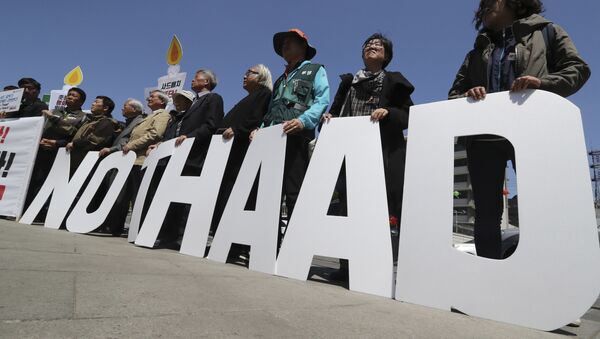A civic group in the area told the Korea Times that the movement of military equipment for THAAD in the middle of the night “is nothing short of subjecting us to military martial law.”
On April 26, Sputnik reported on the positioning of THAAD infrastructure on a golf course in South Korea. As soon as it began, Yonhap reported, clashes broke out between police forces and protesting civilians.
The South Korean Defense Ministry estimates THAAD will be operational by the end of 2017.
That won’t be the case if the protesters see their demands come to fruition: Pushback from civilian groups will continue until the military asset is removed, the Korea Times reported. The “unilateral decision,” it said, shows that US Forces Korea “has absolutely no regard for the residents whose lives are directly affected by such a political decision.”
Approximately 8,000 armed officers equipped with riot shields formed a perimeter at the wee hour of 4:50 am on Wednesday, while radars and transportable missile launchers were moved onto the golf course where THAAD is planned to be stationed. According to a Korean Confederation of Trade Unions statement, “nothing shows the government’s desperation and illegitimacy more than the time the equipment was transported, which was before dawn.”
In the view of residents, militarization does not improve their sense of security, but on the contrary, makes the situation more risky. “The government is putting the lives and safety of Seongju residents at risk by further escalating tension on the Korean Peninsula,” the KCTU said.



